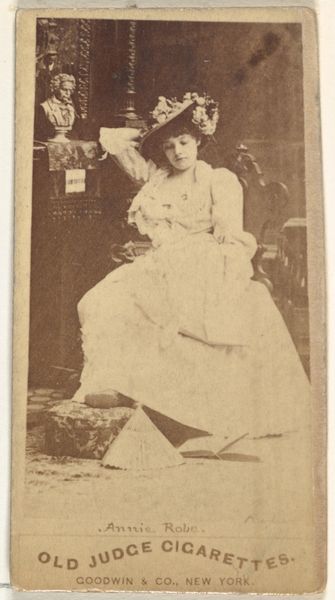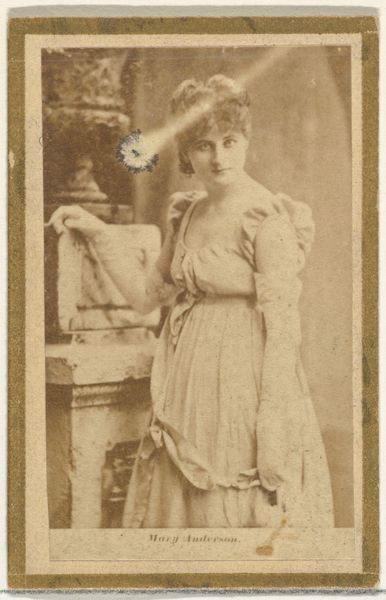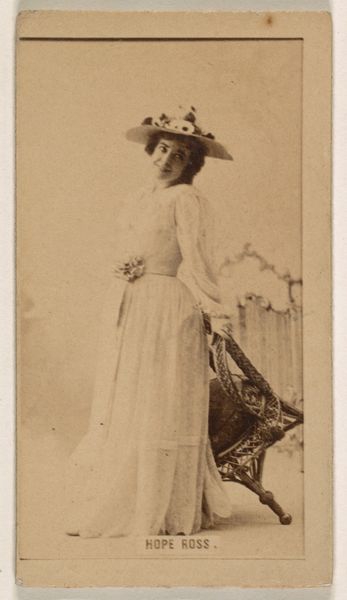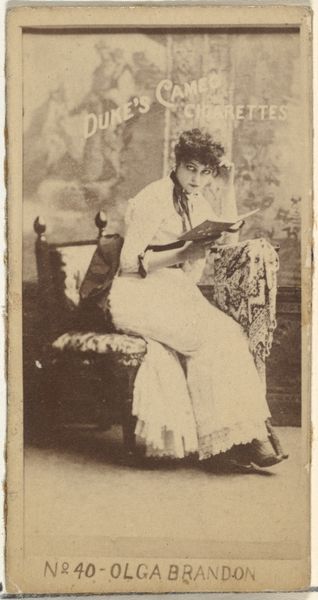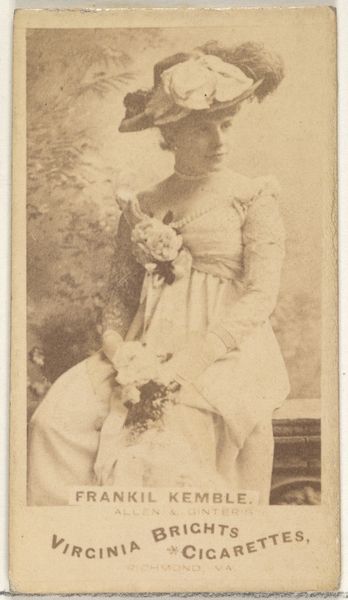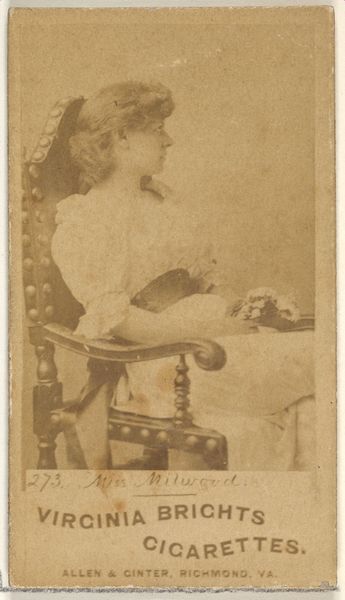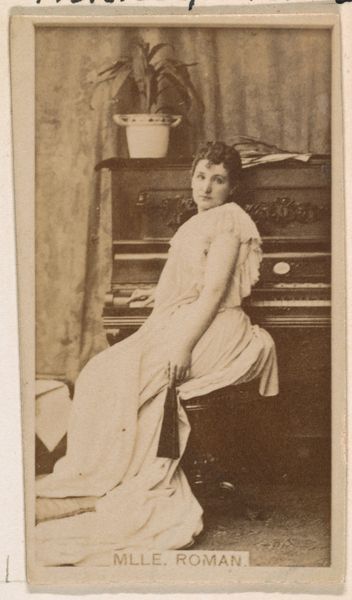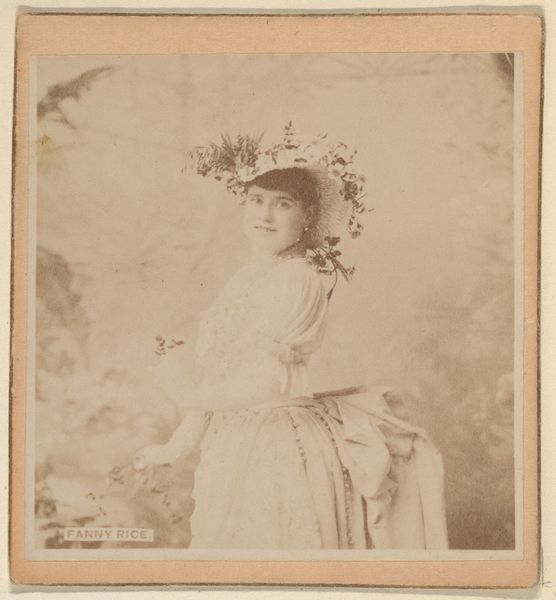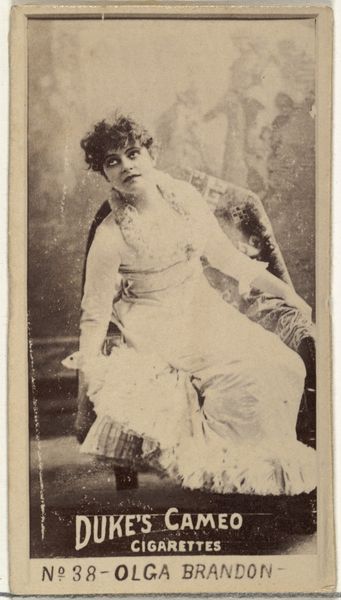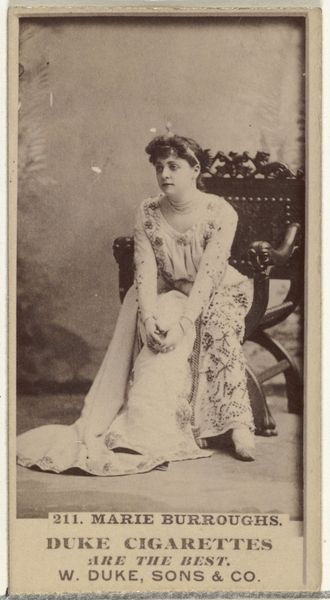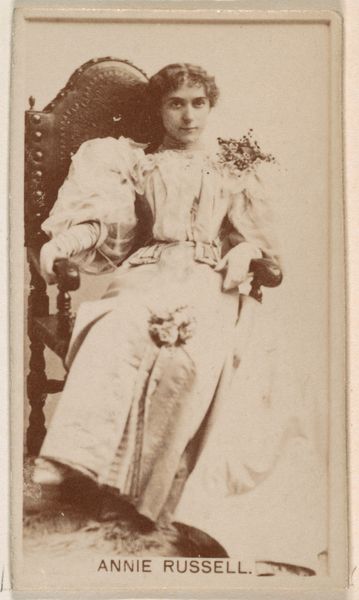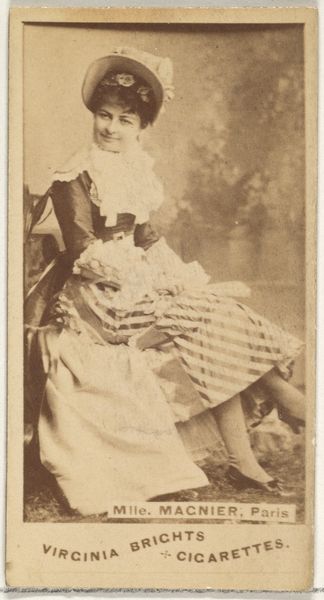
Annie Robe, from the Actors and Actresses series (N171) for Gypsy Queen Cigarettes 1886 - 1890
0:00
0:00
drawing, print, photography
#
portrait
#
drawing
#
aged paper
#
toned paper
#
light pencil work
# print
#
old engraving style
#
photography
Dimensions: sheet: 2 11/16 x 1 3/8 in. (6.9 x 3.5 cm)
Copyright: Public Domain
Curator: What strikes me immediately is how… sepia-toned dreams smell. All at once antique, theatrical, a little sad. She's almost swimming in that dress, don't you think? Editor: Indeed. What we're observing is a photographic print from Goodwin & Company, dating from about 1886 to 1890. It's titled "Annie Robe, from the Actors and Actresses series (N171) for Gypsy Queen Cigarettes." This piece sits within a larger cultural phenomenon – the rise of celebrity endorsements, and tobacco companies exploiting the popularity of stage actresses to market their product. Curator: Celebrity…cigarettes. That explains the knowing, slightly world-weary look. Editor: Absolutely. Consider the construction of femininity at the time, how stage actresses often defied rigid Victorian norms, and how the simple act of smoking was becoming coded as both rebellious and fashionable for women. The light pencil work is such that the portrait is like a soft and romantic veil, but she sells poison, and, likely, sold her image to male audiences. It becomes a powerful tension. Curator: It's…complicated. Almost like they're using her beauty to cover something more complex. A little unfair if you ask me! Like a performance *of* femininity as much as a representation *of* it. It seems like she isn't completely in control. It feels off, somehow. Editor: It’s a product of its time, but that doesn’t negate the discomfort that viewing it may still provoke today. And such historical context makes us understand some nuances in the work. It isn't simply a pretty picture; it is a commentary of many levels when we dissect who had the real power here. Curator: You're right. It's more layered than my initial sepia dream. It shows you should dig into those 'off' feelings, and not settle with just initial aesthetic observations. Editor: Yes! It goes to show how vital a broader awareness of gender, class, and consumption patterns can shape our engagement with these objects. Art always exists within historical currents. Curator: Absolutely! Well, after all this deep dive into intersectionality and art, I might have to go out there and light a… Nevermind. Just kidding! Thanks for the chat, truly insightful!
Comments
No comments
Be the first to comment and join the conversation on the ultimate creative platform.
